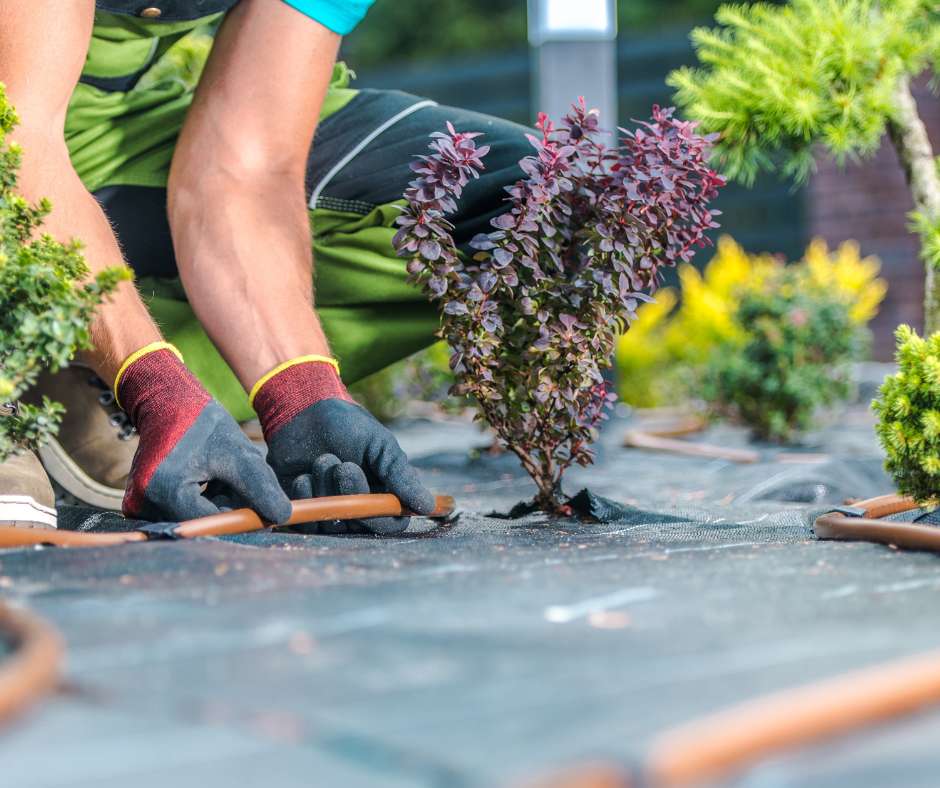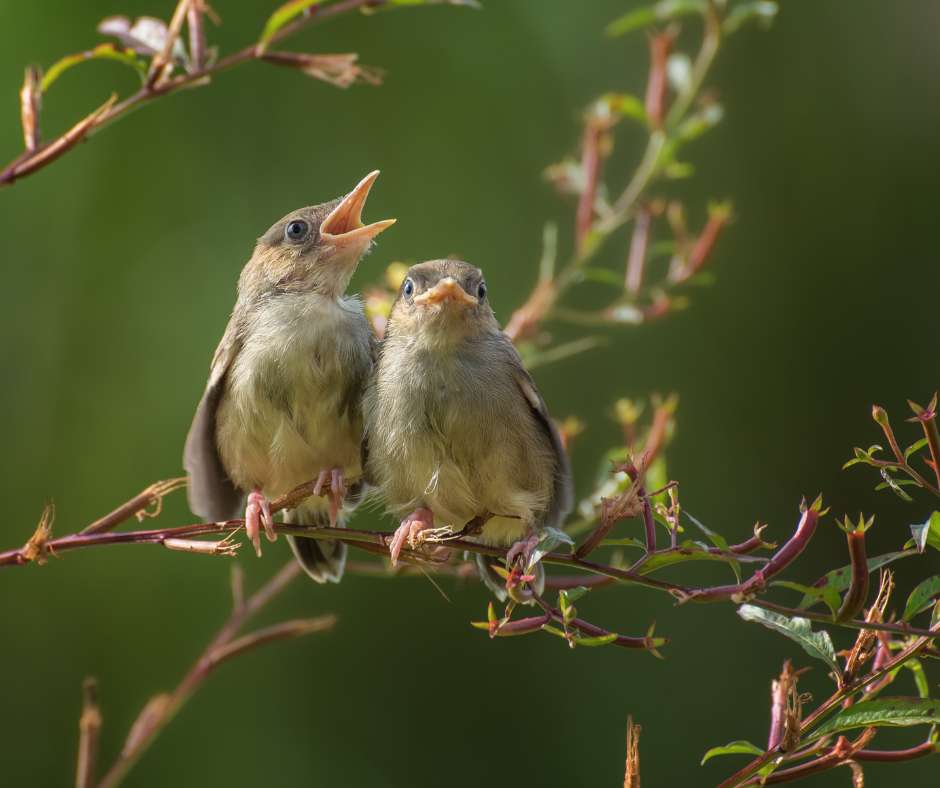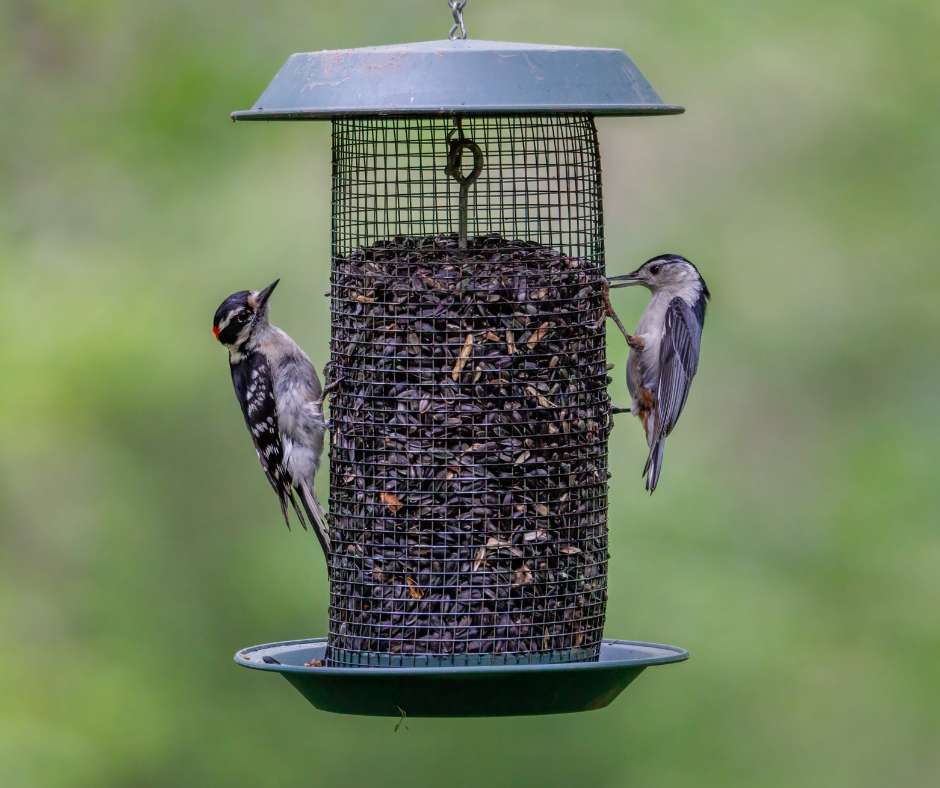Imagine chirping symphonies and flashes of vibrant wings right outside your window. A bird garden isn’t just beautiful, it’s a haven for feathered friends and a joy for you. Want to attract these delightful neighbors? It’s easier than you think!
This guide gives you simple steps to transform your yard into a buzzing bird sanctuary, filled with natural food, cozy shelters, and refreshing water. Let’s create a haven for them to sing, raise families, and bring you endless hours of birding delight! Get ready to watch your backyard blossom into a vibrant bird paradise!
Why Should You Create a Bird Garden?
Birds bring beauty and benefits to your backyard! They fill the air with lovely songs, eat pesky bugs, and help plants grow. There is some more reason behind this:
Birds Pollinate Your Plants
They sip yummy nectar from flowers, and pollen dust sticks to their feathers. When they fly to another flower, the dust rubs off, helping the plant make seeds and grow new plants. It’s like birds give the flowers a piggyback ride for their pollen!
Birds Help Take Care of Your Weeds
Birds can help control weeds in your garden! They love munching on weed seeds and insects that might otherwise harm your plants. They’re like tiny pest patrol units, keeping your garden healthy and weed-free.
Birds Benefit From Our Help
Even though birds seem like independent creatures soaring through the sky, they face many challenges that our help can alleviate. Such as:
- Plant yummy bird buffets with berries, seeds, and flowers.
- Build cozy bird apartments for raising families.
- Ditch chemicals to keep their food and water healthy.
- Provide cool birdbaths for drinking and bathing.
- Support clean water efforts to give them sparkling rivers. ️
Attracting Native Types of Birds to Your Yard
Attracting native birds to your yard is easy and rewarding! There are many techniques. You can choose local plants that bloom throughout the year, offering food and shelter for different bird species. By offering diverse food sources and providing nesting sites. For these reasons, you should create a bird garden.

How to Create a Bird Garden?
Here is some process to create a bird garden. By following this process, you can make a beautiful bird garden.
- Identifying native birds in your area
- Choosing best plans for bird
- Choosing plants that provide food and shelter
- Making sure water for birds
- Providing bird nesting material
- Avoiding Insecticides

Now we’ll elaborate on each point to make a bird garden.
What Birds Are Native to Your Area
Knowing what birds are native to your area is crucial for creating a vibrant and successful bird garden. Birds love familiar flavors! Imagine their joy finding seeds and berries they recognize in your yard. To attract these feathered friends, you need to know who lives around you. These local birds have special needs, and knowing them is like speaking their language.
Knowing your local birds allows you to identify and appreciate the feathered visitors you attract. You’ll learn their unique songs, behaviors, and preferred habitats, deepening your connection to the natural world right outside your window.
By attracting native birds, you contribute to a balanced ecosystem. Native species often play vital roles in pollination, seed dispersal, and pest control, benefiting your local environment.
In short, knowing your native birds empowers you to create a thriving bird haven that benefits both the birds and your local ecosystem, while enriching your own enjoyment of nature.
Choosing the Best Plants for Birds
Creating a bird-friendly haven in your backyard isn’t just about aesthetics; it’s about fostering a vital ecosystem. Choosing the right plants attracts the birds you love to see while providing them with the resources they need to thrive.
Plant for All Seasons
Provide a year-round feast by planting a variety of plants that bloom, fruit, and provide seeds throughout the year. This ensures a constant food source for resident birds and migrating flocks. Opt for native plants. They’re adapted to your local climate and soil, requiring less maintenance and attracting birds that have co-evolved with them.
While flowers attract pollinators, don’t forget plants with berries, nuts, and seeds. These offer vital food sources for birds, especially during harsh winters or raising young. Avoid using pesticides and herbicides in your bird garden. These chemicals harm not only birds but also the insects they eat.
Choosing Plants That Provide Food and Shelter
There are many plants that provide food to birds. Such as Sunflowers, Honeysuckle, Crabapple trees, Raspberry, Blueberry, Milkweed, Pine, Spruce, etc provide seeds and shelter for numerous birds.

Plants That Provide Shelter for Birds
There are many plants that provide shelter for the birds as well as attract birds. Such as: Evergreens, Thorny shrubs,Tall grasses and sedges, Hollow logs and snags etc.
By incorporating a variety of these plants into your landscape, you can create a bird-friendly haven that provides both food and shelter for your feathered friends.
Growing happy plants in your bird garden is crucial! Native plants offer familiar food sources like seeds, berries, and nectar, keeping them healthy and happy.
Here are some specific plants you can use to create a bird-friendly garden:
Trees: Oaks, cherries, and dogwoods provide food and shelter.
Shrubs: Viburnums and honeysuckle offer berries, nectar, and cover.
Flowers: Sunflowers, coneflowers, and asters attract insects and provide seeds.
By following these tips, you can create a beautiful and welcoming bird garden that will bring you joy for years to come.
Making Sure There is Water for Birds:
Provide a clean bird bath filled with fresh water, especially during hot weather. You can consider adding a small fountain or dripping hose to your birdbath, so that a heated birdbath will be a lifesaver for thirsty birds during freezing temperatures.
Providing Bird Nesting Material:
Transform your yard into a cozy avian apartment complex! Leave piles of leaves, twigs, and branches for natural building blocks. Hang birdhouses for safe havens, choosing the right size for your desired feathered tenants.
Don’t forget a “Fiber Frenzy” basket with yarn, string, and feathers – some birds love a touch of human flair! Remember, quiet corners and regular cleaning are key to happy feathered families.
Avoiding Insecticides in Your Bird-Friendly Garden:
Birds love bugs! Especially for their babies. Insecticides kill those yummy snacks, leaving birds hungry and grumpy.
Imagine you with no candy – not fun! Worse, some bug killers can even poison our feathered friends.
But here’s the good news: birds are like tiny gardeners, gobbling up bad bugs and keeping your plants healthy. So, by skipping the sprays in your bird garden, you help the birds, your plants, and your whole backyard!
Does Your Garden Need a Bird Feeder?
Bird feeders can attract a wider variety of birds to your garden than you might see naturally, especially in areas with limited natural food sources. This can be a great way to enjoy watching different species and learning about their behaviors.
Bird feeders can be a valuable source of food for birds, especially during times of year when natural food is scarce, such as winter or during droughts. In some cases, bird feeders can help to support declining bird populations by providing them with a reliable source of food.

Low Cost Gardening Tips:
Start small: Don’t feel pressured to overhaul your entire yard. Introduce bird-friendly elements gradually, like adding a few native plants or a simple birdbath.
Recycle and repurpose: Use old containers, pallets, or discarded furniture to create bird feeders, birdhouses, or nesting platforms.
Location is key: Put feeders in sheltered areas away from windows and busy paths to prevent collisions and stress. Choose different heights and types to attract diverse birds.
Sun or shade: Offer a mix of sunny and shaded feeding spots to cater to different birds’ preferences.
Squirrel deterrents: Hang feeders on poles with baffles or use squirrel-proof feeders to protect the bounty for your feathered friends.
Regular scrub down: Clean feeders with soapy water and a disinfectant (vinegar solution works well) every two weeks, especially during hot weather, to prevent disease spread.
Provide Fresh Water for Birds: Offer a bird bath filled with clean, fresh water year-round. Place it in a sunny spot with easy access for birds and away from predators.
Provide Shelter and Protection: Plant dense shrubs and hedges to provide safe cover for birds from predators and harsh weather. Leave piles of leaves, twigs, and branches for birds to use as nesting materials and hiding places.
Grow Your Own Bird Food: Plant fruit-bearing shrubs and trees like blueberries, raspberries, and elderberries to provide food for birds throughout the year. Choose flowering plants like sunflowers, coneflowers, and zinnias that produce seeds birds love to munch on.
Identify Your Bird Garden Visitors: Familiarize yourself with common bird calls to recognize who’s visiting even when you don’t see them.
Wrap up
Soar into the joy of a vibrant bird garden! Remember, small steps like planting native flowers, offering clean water, and skipping harsh chemicals create a haven for our feathered friends.
You’ll be rewarded with their beautiful songs, natural pest control, and a connection to nature right outside your window. Start small, DIY, and have fun! Learn your birds’ names, watch their families grow, and share the joy with others.
With a little effort, your backyard can become a buzzing bird sanctuary, bringing you endless hours of chirping delight! Happy birding!

